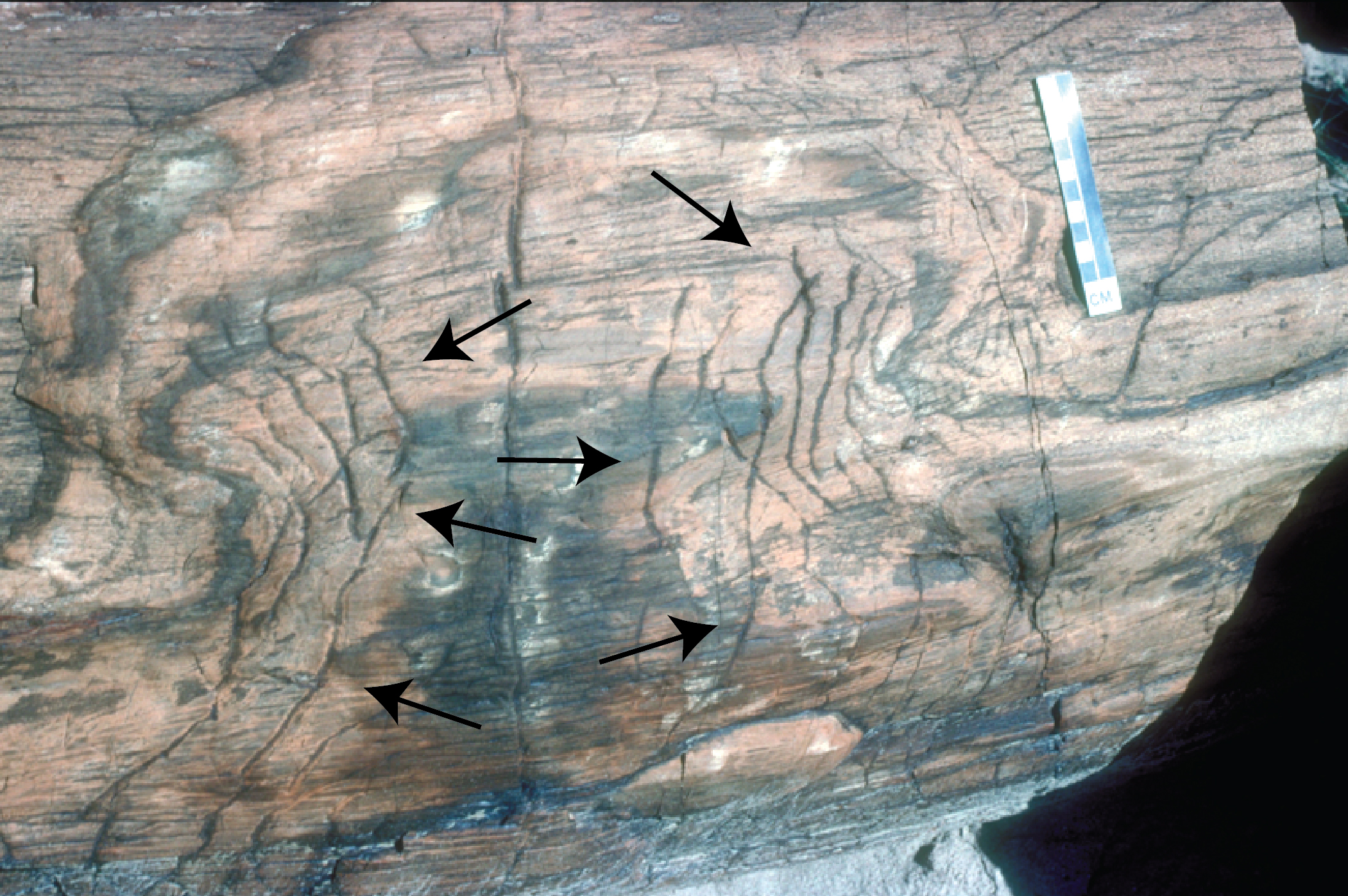Paleoscotylus Walker, 1938
DESCRIPTION: Straight to sinuous, millimeter-scale (~5 mm) borings in wood that radiate in multiple directions that can intersect with other tunnels. In well-preserved specimens, tunnels radiate away from a central straight tunnel.
BEHAVIOR(S): Reproduction, calichnia.
ENVIRONMENTAL SETTINGS: Wood in terrestrial environments.
POSSIBLE TRACEMAKERS: Beetle larvae of the Scolytidae (Coleoptera)
GEOLOGIC RANGE: Carboniferous to recent
ADDITIONAL REFERENCES: Häntzschel, 1975
REMARKS: The adult female produces the initial straight tunnel in which eggs are laid along the groove. The eggs hatch into larvae, which feed on wood by boring away from the initial groove or tunnel. Tunnels increase in diameter away from their origin as the larvae grow. Tunnels end in an irregular chamber in which the larvae pupate into an adult.
